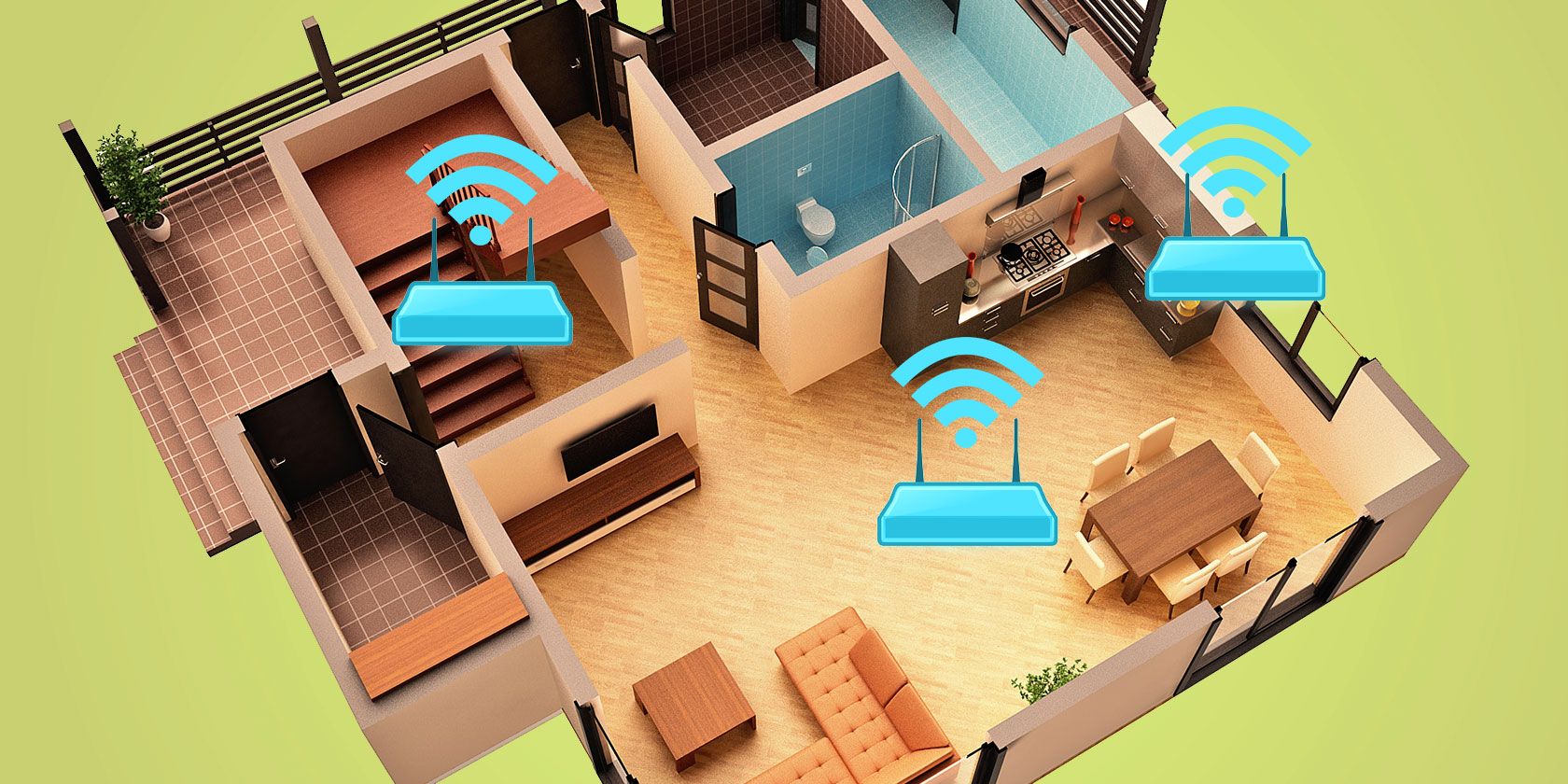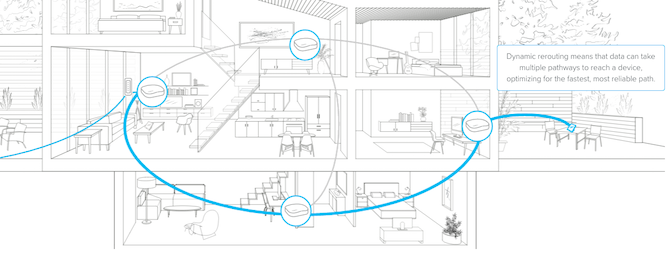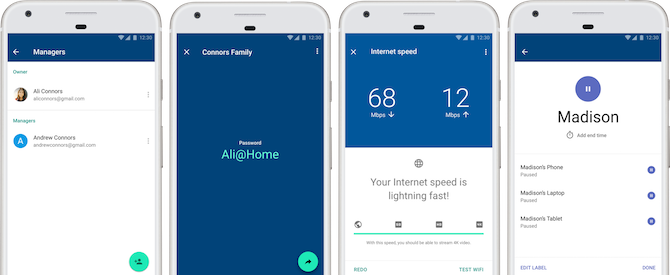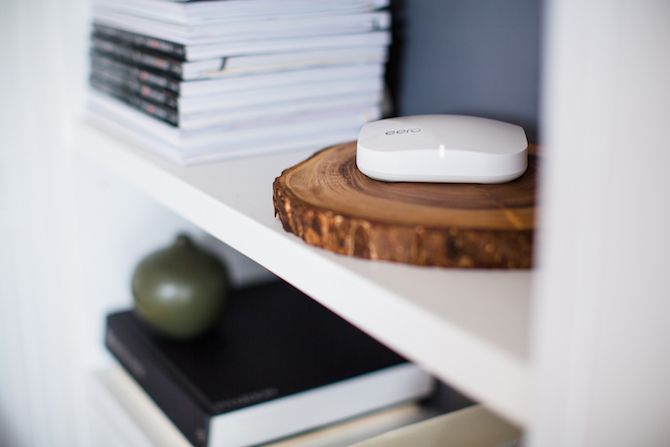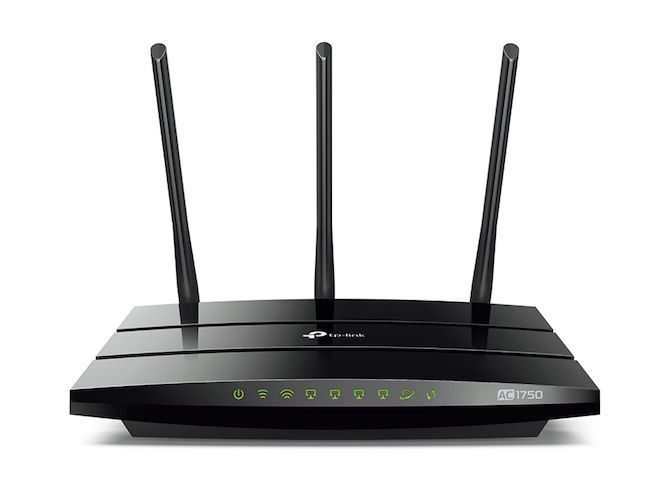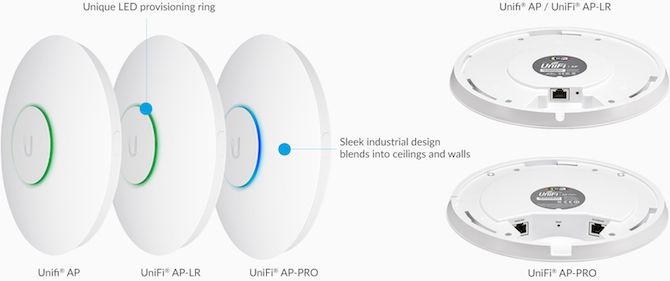Chances are, your Wi-Fi router is currently tucked away in a corner somewhere. Under the staircase, or in your office, where the phone line is. While it tries to cover your entire house, it has to fight walls (thick and thin), objects and floors. Most of the time, it doesn't make it. And you end up with spotty coverage in your upstairs bedroom, cursing YouTube because it keeps buffering. Mesh Wi-Fi systems want to put an end to this horror.
What Is Mesh Wi-Fi?
Mesh routers take care of spotty coverage by adding more muscle and smarts. Instead of one router, you have multiple units (satellites, as they're usually referred to), spread across your house. They all talk to each other, forming an interconnected network -- a mesh network.
You might have heard about mesh networking when the app Firechat first broke through into our collective conscious. The app lets users chat without the internet. At the time, it felt like magic. The app was using smartphone radios to create a device-to-device network. This is similar to what AirDrop does when you transfer photos from one iPhone to another. FireChat did this for millions of users and what you had at the end was a major area covered in the network. Mesh routers do the same but for your Wi-Fi routers.
Reasons to Use Mesh Wi-Fi
1. Blanket Wi-Fi Everywhere
If you've got a large-ish or a multi-storied home, you'll benefit from a mesh network router. Once the main device is setup, all you have to do is plug in a satellite unit and connect it to the network. Eero, for example, starts you off with three satellites and you can add up to ten satellites in the same network. Put one in your garage, and you'll get internet access in the front lawn and your backyard.
2. They're Much Better Than Range Extenders
If you go looking for ways to extend Wi-Fi coverage, the first thing that pops-up are range extenders. They're cheap and small, about the size of a power adapter. Plug one into the power socket and they create their own little Wi-Fi network. Which means you end up with half the speeds. They are mini repeaters. As they create their own network you need to manually switch to them every single time. And because they're so small, their range isn't that great.
3. No Clunky Web Interface
Mesh routers bring consumer networking to the mobile era. There's no complicated web admin interface to deal with. With systems like Google Wifi, the only way to set up and control the device is using a simple and intuitive mobile app.
This makes managing the network easy. Tasks such as changing the password, blocking access for a while, or restarting the network only take a couple of taps from your phone.
4. Control and Over-the-Top Features
When you have the option to control the Wi-Fi access for all your connected devices in the palm of your hands, you can do interesting things. Google Wifi's Family Pause feature lets you pause internet access for a group of devices (something parents will love). Companion apps will also give you information about how much speed you're getting and how much data you're using.
5. A Better Experience
Eero did for Wi-Fi routers what Apple did for smartphones. Managing one router is sometimes a pain in the neck. Creating a system of multiple routers, linking them together, making sure they're all working as they should is out of scope for any average internet user.
Eero created a system so that it was possible for anyone to set up and use. It's put the power of Wi-Fi -- now a basic need -- in the palm of the hands of the end user, without making it complicated. If you're a fan of Apple's style of product design -- set it and forget it -- you'll appreciate mesh router systems.
Reasons Not to Use Mesh Wi-Fi
1. Maybe You Just Need a Better Router
Mesh routers come into their own when your house is larger than 1,500 square feet or multi-storied. Anything smaller than that (say a studio apartment), you're better off with an old-fashioned single router setup. If your current router is proving troublesome even in a small area, consider upgrading to something like TP-Link Archer C7. It's a dual-band, three-stream 802.11ac router that has amazing range and it's under $90. A fraction of the cost of a mesh router starters kit.
2. They're Still Quite Expensive
You'll get an awesome standalone Wi-Fi router from TP-Link or Netgear for around $100. Eero's starter pack is $399 (three units), Google Wifi is $299 (three units), and Netgear Orbi is $399 (two units). That's a significant cost. Worth it if spotty Wi-Fi coverage is getting in the way of your productivity. Not so much if the worst thing that happens is you lose a bar when you're out in the backyard.
3. They're Not Exactly Pro Tools
If you're a power user who wants complete control over their own network, including customization tools, the current crop of mesh networks aren't for you. You'd be better off creating your own multi-device wireless system using high-end routers and repeaters. While mesh routers are faster and more reliable than single router setups, they still don't hold a candle against a wired network solution. They usually lack a web configuration tool and rely solely on mobile apps.
Then there's a crop of (similarly priced) enterprise level multi-device wireless routers from Ubiquiti that the Ars Technica writers have taken a liking towards for their reliability and customization options. You connect each unit using Ethernet and they provide their own Wi-Fi coverage in their own area. So the actual internet connection isn't traveling through three connecting devices -- it's coming straight from the Ethernet port, no matter where you are.
Recommended Mesh Wi-Fi Routers
eero Home WiFi System -- The router that started it all is still the reviewer's darling. The entire setup and user experience is thoughtfully designed, it's extensible and the networking is reliable.
Google Wifi -- Google Wifi is similar to Eero and a bit cheaper. The satellites are quite small and fashionable enough that you won't mind having them up on display in your living room. If you're all into Google's ecosystem, it makes sense to go with Google Wifi. In future, it's bound to receive features that will make it work better with Android, Chromecast, and Google Home.
Orbi Home WiFi System -- Netgear Orbi is not as sexy as Eero or Google Wifi and its starter kit only comes with two satellites. But what's interesting about Orbi is its tri-band system. Other than the two frequencies for internet access, it has another that's just for the mesh network. Which means that while Orbi satellites are talking to each other, strengthening your Wi-Fi system, it's not actually taking away from available internet bandwidth.
Mesh Wi-Fi is big on potential, as well as internet coverage. Mesh offers a realistic Wi-Fi solution for large houses, and while the initial outlay is somewhat eye-watering, it represents a good choice for basic and advanced users.
Will you be upgrading to a Mesh network anytime soon? Or are you waiting for the prices to drop? Or for more features? Share with us in the comments below.
Image Credits: maslov.mig/Shutterstock

